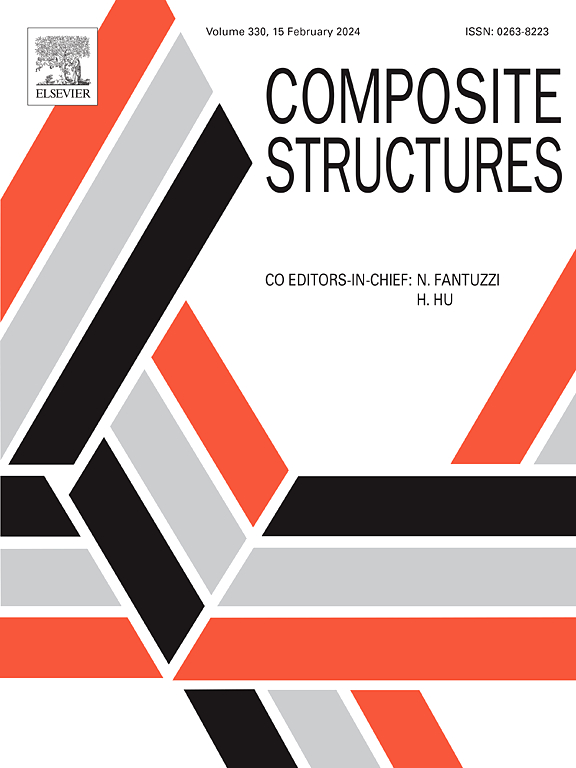陶瓷基复合材料机械响应的平均场均质化模型
IF 6.3
2区 材料科学
Q1 MATERIALS SCIENCE, COMPOSITES
引用次数: 0
摘要
SiC/SiC 复合材料在高温和辐照条件下具有优异的机械稳定性。因此,这些陶瓷基复合材料是未来核能应用的有力候选材料。它们的机械响应表现出假塑性,是由基体开裂、纤维脱粘和滑移导致的纤维拉出引起的。本研究介绍了单向增强 SiC/SiC 复合材料行为的力学模型。特别是提出了一种平均场均质化方法,以考虑机械变形过程中的所有变形和降解模式。均质化方案依赖于 Mori Tanaka 方法,该方法被扩展用于考虑涂层弹塑性响应对微机械场发展的影响。此外,所提出的模型还引入了一种方法,可有效解释局部损伤(即裂纹)对纤维和基体内部机械场的影响。根据实验数据对模型进行验证后,讨论了界面滑动、涂层尺寸和固有弹性响应以及微观结构(如孔隙率、纤维体积分数)的作用。本文章由计算机程序翻译,如有差异,请以英文原文为准。
A mean field homogenization model for the mechanical response of ceramic matrix composites
SiC/SiC composites offer exceptional mechanical stability at high temperatures and under irradiation. These ceramic matrix composites are therefore strong candidate materials for future nuclear energy applications. Their mechanical response, which exhibits pseudo-plasticity, is mediated by matrix cracking, fiber debonding, and fiber pull-out due to slip. This study introduces a mechanistic model for the behavior of unidirectionally reinforced SiC/SiC composites. Specifically a mean field homogenization approach is proposed to account for all deformation and degradation modes during mechanical deformation. The homogenization scheme relies on a Mori Tanaka method that is extended to consider the effects of the coating’s elasto-plastic response on the development of micromechanical fields. Further, the model proposed introduces a method to effectively account for the role of localized damage (i.e., cracks) on mechanical fields within both the fiber and the matrix. Upon validating the model against experimental data, the roles of interface sliding, coating dimensions and intrinsic elastic response, as well as of microstructure (e.g. porosity, fiber volume fraction) are discussed.
求助全文
通过发布文献求助,成功后即可免费获取论文全文。
去求助
来源期刊

Composite Structures
工程技术-材料科学:复合
CiteScore
12.00
自引率
12.70%
发文量
1246
审稿时长
78 days
期刊介绍:
The past few decades have seen outstanding advances in the use of composite materials in structural applications. There can be little doubt that, within engineering circles, composites have revolutionised traditional design concepts and made possible an unparalleled range of new and exciting possibilities as viable materials for construction. Composite Structures, an International Journal, disseminates knowledge between users, manufacturers, designers and researchers involved in structures or structural components manufactured using composite materials.
The journal publishes papers which contribute to knowledge in the use of composite materials in engineering structures. Papers deal with design, research and development studies, experimental investigations, theoretical analysis and fabrication techniques relevant to the application of composites in load-bearing components for assemblies, ranging from individual components such as plates and shells to complete composite structures.
 求助内容:
求助内容: 应助结果提醒方式:
应助结果提醒方式:


